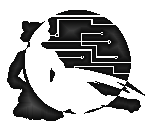|
Surviving UNIX/Linux Admin Course
Most of you have never taken a true operating system
course before; let alone a powerful server oriented operating system
class. This will be a very different type of class for most folks. My
favorite analogy to explain the difference is the difference between
regular drivers and gear heads. A regular driver wants to hop in a car
and just drive. They'd rather not even have to worry about putting gas in
the car or checking the oil. They even did a survey and a lot of drivers
wouldn't care if you welded the hood shut. A gear head will take apart the
engine, check all the parts, fine tune it, then drive it.
Most computer users are like the
"regular drivers". They just want to sit in front of the computer, tell it
what to do, and have it do that.
Sadly, no computers are that easy to use yet. So don't worry too much if
it seems a little confusing at first. I'm here to be your guide and help
it make sense. Ask questions whenever you have them, in class, by email,
during lab and office hours, I'm here to help.
In this course, we'll be a bit closer to the "gear heads". We
will actually learn a lot of what goes on "under the hood" of the
Operating System. Some of this stuff would normally be configured once,
then never touched again. So while it is a lot of work in this course, in
practical use you'd be doing most of these routines rarely at home, more
frequently at work depending on your job.
UNIX/Linux, at first, seems like many little parts that don't seem to go
together at first. Kind of like a car engine that's been taken apart. You
learn what the pieces do, then you learn what they can do when you put
them together. In this class, we'll also learn about the pieces
(filesystems, permissions, shells, adding users) and hopefully you'll see
how it goes together to make a wonderful multi-user server operating
system.
Now, I'll admit,
there are folks out there that primarily use Linux as a desktop OS, and
that's fine. I hope to offer just "how to use Linux at home" type courses
in the future, but this one will do a lot more. Of course, you can decide
to forget the "under the hood" stuff, and just use what you need at home,
and that's fine, after the class is over.
****To Do Well in This Course****
You need to do the following:
- First, relax and try to have fun. If you are a beginner, don't
worry about those who seem to be "experts". You'll do fine in the course,
and heck, the "experts" are great for lab partners. :)
- Attend Class, take notes, ask questions
- Try out the commands as often and in as many different ways as
possible (Don't be afraid to experiment. You shouldn't be able to even
dent your shell account as a beginner, and the worst thing you could do to your
own installation is have to reinstall. So no biggy!)
- Read the topic web pages linked off your syllabus
- Try out the commands from the topic web pages as often and in
as many different ways as possible
- Learn How to Find Answers
yourself,
as this is a constant job no matter what you do with computers
- Try out the commands from where you found answers as often and
in as many different ways as possible
- Go to lab, practice
- Go to lab during my lab hours, ask me questions
- EMAIL ME WITH QUESTIONS!!!
- Do NOT wait until the 8th week to tell me "I don't understand
any of it" ask me questions as soon as you get them
- Make a small notebook of "Questions to ask Phil" if you can't
remember to ask them in class
- Practice, practice, practice
- ask questions, questions, questions (worse thing I'll ever say
is for you to wait until after class or until lab to ask them, and then
only rarely ;)
|


